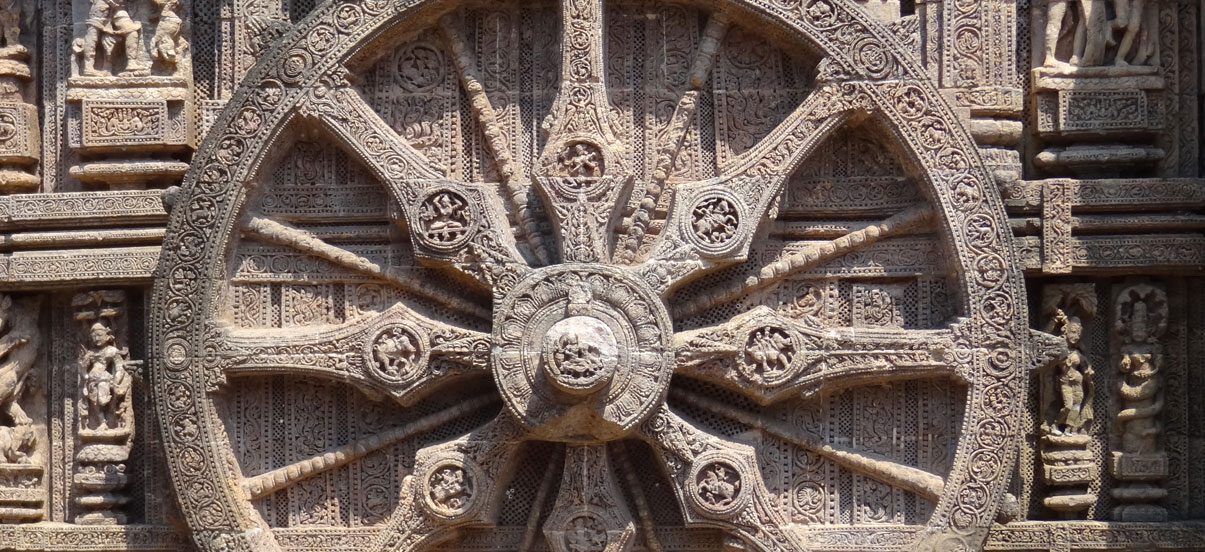Proper name: Lingaraj Temple
State: Odisha
Location: Bhubaneshwar
Primary deity: Harihara Bhuvaneshwari
Architectural styles: Kalingan Pancharatha Style
Date built: 11th century C.E.
Built by: King Jajati Keshari
Lingaraj Temple is a temple of the Hindu god Harihara and is one of the oldest temples of the Temple City Bhubaneswar, a revered pilgrimage center and the capital of the state of Odisha
The temple of Lingaraj, the biggest of all at Bhubaneswar is located within a spacious compound wall of latte-rite measuring 520 feet by 465 feet. The wall is 7 feet 6 inches thick and surmounted by a plain slant coping. Alongside the inner face of the boundary wall there runs a terrace probably meant to protect the compound wall against outside aggression.
The temple of Lingaraj is by far the most notable monument of Bhubaneswar. Rising to a height of about one hundred and eighty feet and dominating the entire landscape it represents the quintessence of the Kalinga type of architecture and the culminating result of the architectural tradition at Bhubaneswar.
History
Lingaraj means ‘the king of Lingas’, ‘Linga’ or ‘Lingam’ being the symbol of Lord Shiva worship. Lord Shiva is here worshipped as Tribhuvaneshwara (Master of three worlds, i.e. heaven, earth and netherworld). His consort is called Bhuvaneshwari.
The temple is more than 1000 years old, dating back in its present form to the last decade of the eleventh century, though there is evidence that parts of the temple have been there since sixth century AD as the temple has been emphasized in some of the seventh century Sanskrit texts. This is testimony to its sanctity and importance as a Shiva shrine. By the time the Lingaraj temple was constructed, the Jagannath (form of Vishnu) cult had been growing, which historians believe is evidenced by the co-existence of Vishnu and Shiva worship at the temple.
The temple is traditionally believed, though without historical authentication, to be built by the Somavanshi king Jajati Keshari, in 11th century AD. Jajati Keshari had shifted his capital from Jajpur to Bhubaneswar which was referred to as Ekamra Kshetra in the Brahma Purana, an ancient scripture.
The Lingaraj temple stands majestically as the largest temple in Bhubaneswar. At 55 metres high, it dominates the landscape with 150 smaller shrines in its spacious courtyard and is surrounded by massive walls lavishly decorated with beautiful sculptures.
This temple has actually four parts: the main temple, the Yajna Shala, the Bhoga Mandap and finally the Natya Shala. This temple has images of both Shiva and Vishnu. Vishnu is actually present as Shaligram idol. The Shiva idol are surrounding the Vishnu (Shaligram) idol. Even the temple on the top has got no trishula (trident – the weapon of Shiva) and even Chakra (discus – weapon of Lord Vishnu). It has only Lord Rama’s arrow symbol, probably because Lord Rama was a worshipper of Lord Shiva. Several shrines are dedicated to Bhuvaneshvari, Nrisimha, Ganesha, Kartikeya and Vishnu inside the temple.Goddess Bhuvaneshvari is regarded as the Shakti of Lingaraja deva and locally known as Gauri or Gopalinee.Another separate shrine for Devi Parvati is present in the north western corner of the temple.
The temple’s main gates have images of Lord Shiva, Trishula on one side and Lord Vishnu, Chakra on the other side.
This magnificent temple, dedicated to Shiva, represents the type of Hindu architecture. Along with the saswat Temple, it is the pinnacle of the architectural exhibition at London. It contains a profusion of sculptural work. The harmony of the two sects is seen in this temple where the deity is worshiped as Hari-Hara, a combined form of Vishnu and Shiva. The presiding deity, is the Swayambhu Linga. The granite block image of the Linga is said to be bathed daily with water, milk and bhang (marijuana). Almost all the Hindu Gods and Goddesses are represented here, reflecting the innate element of harmony within the religion.
0











